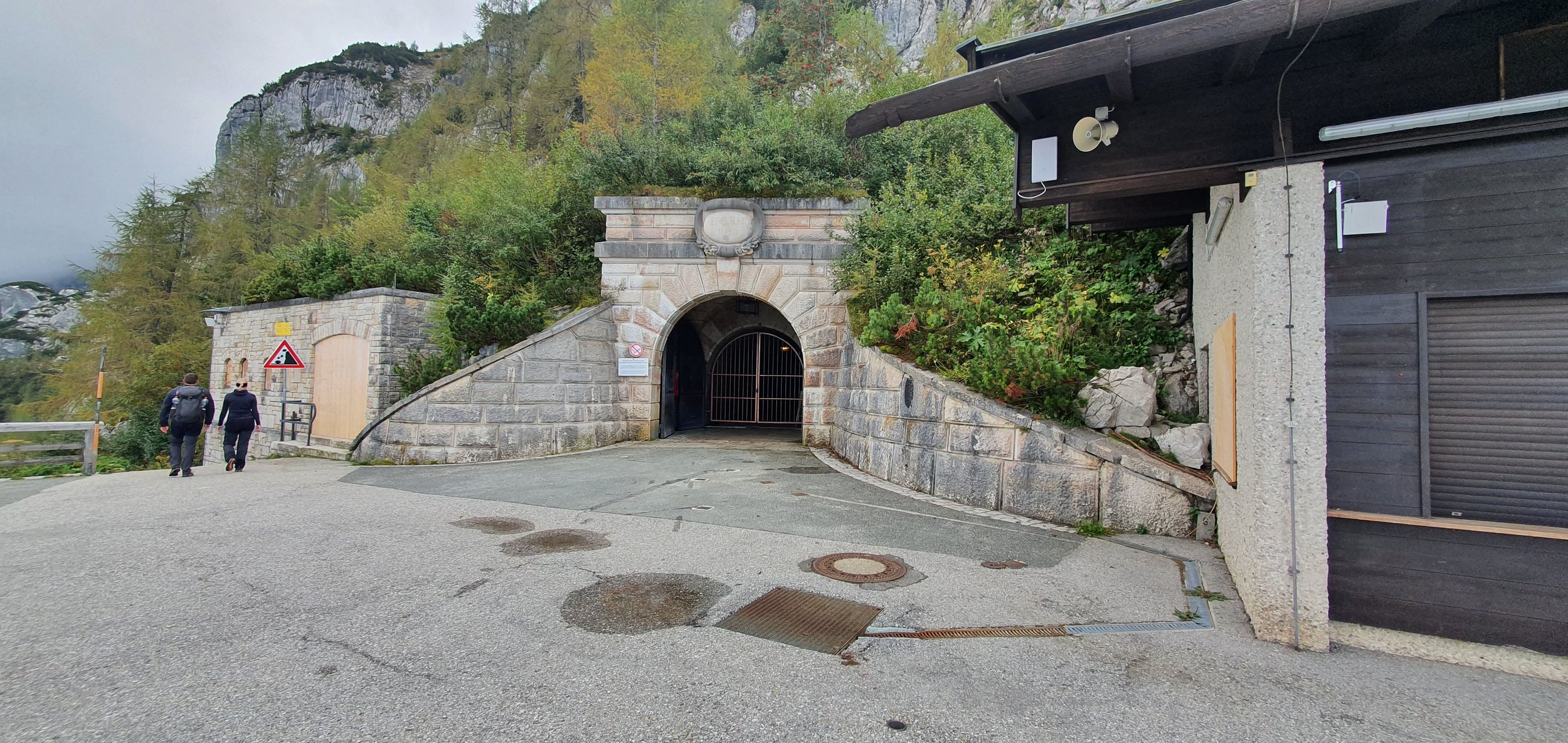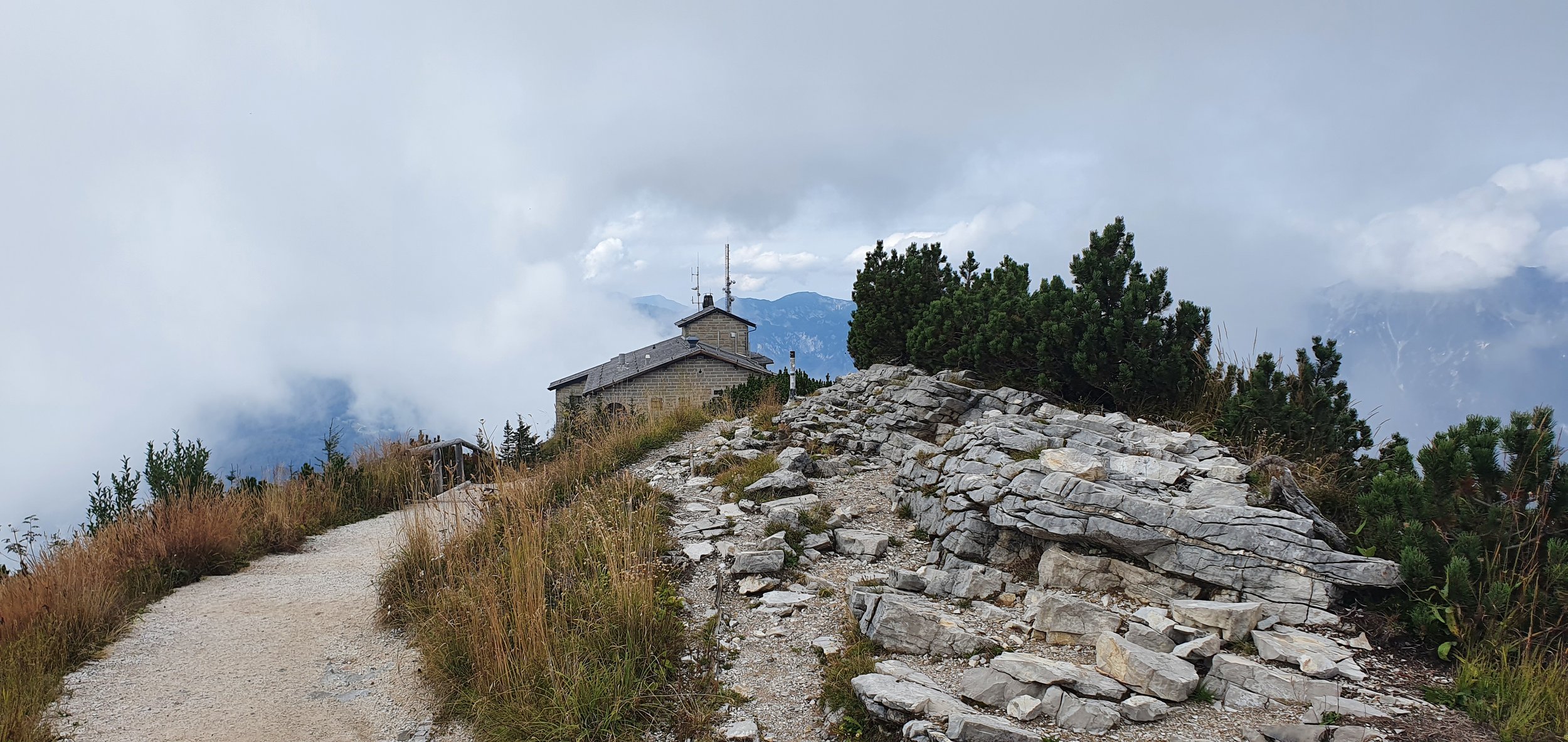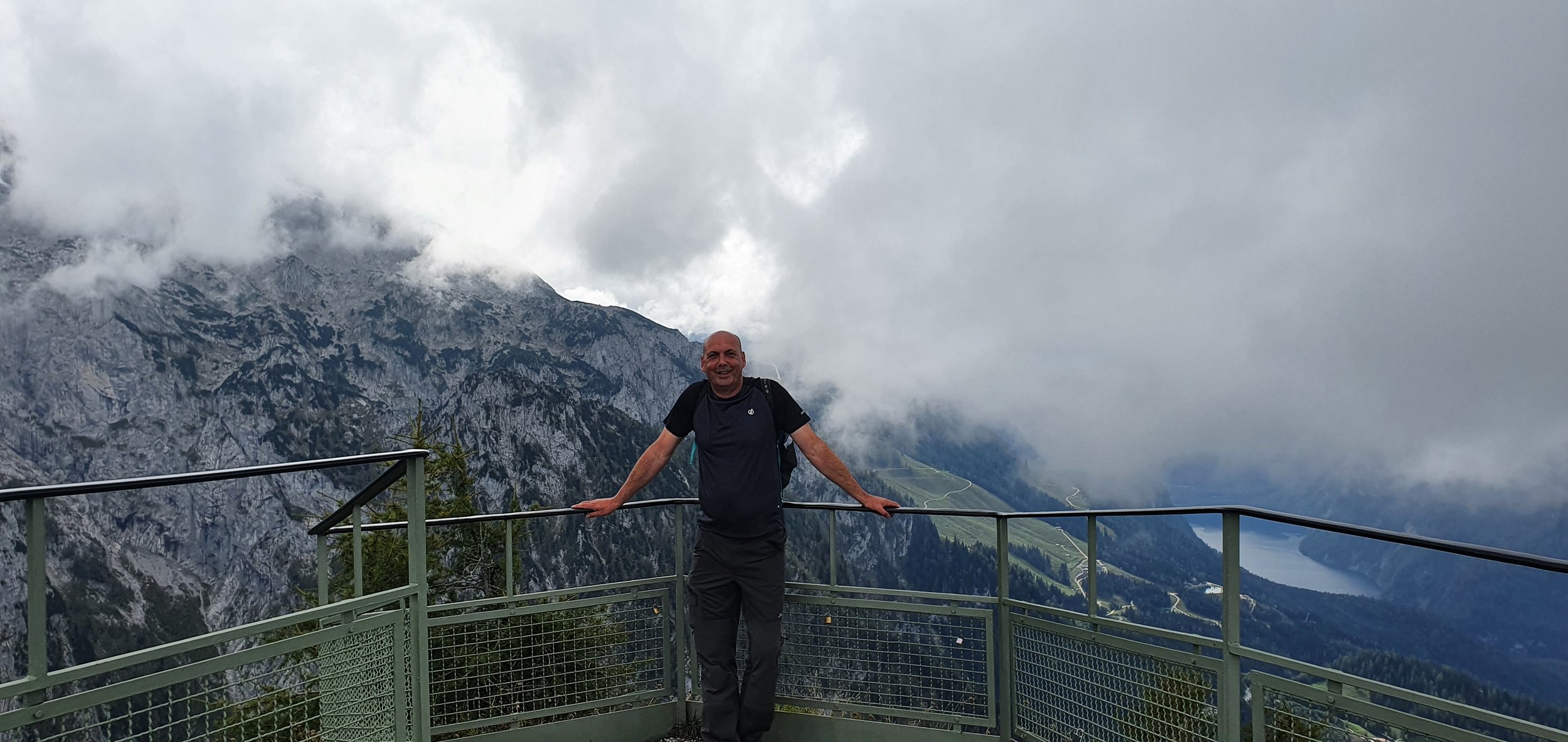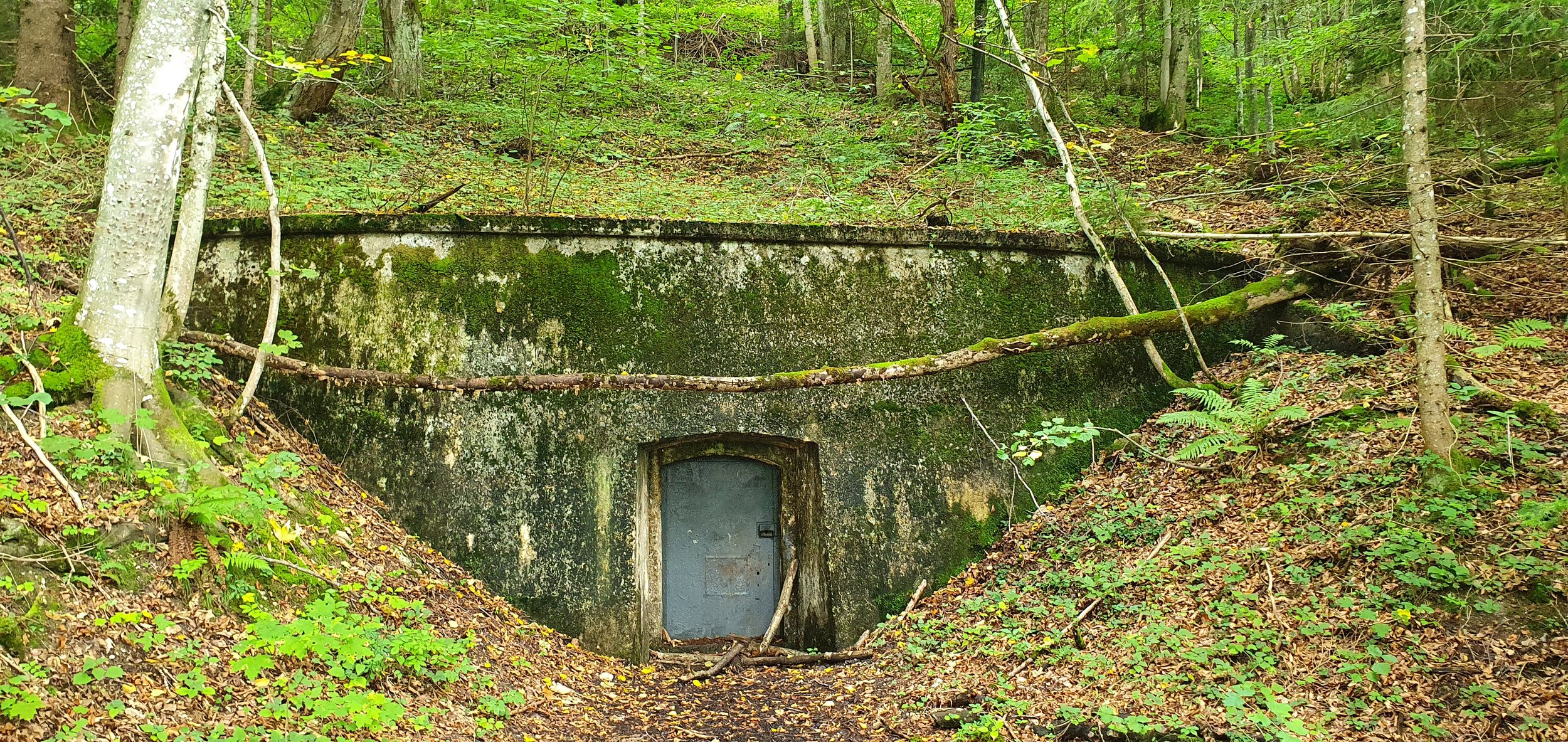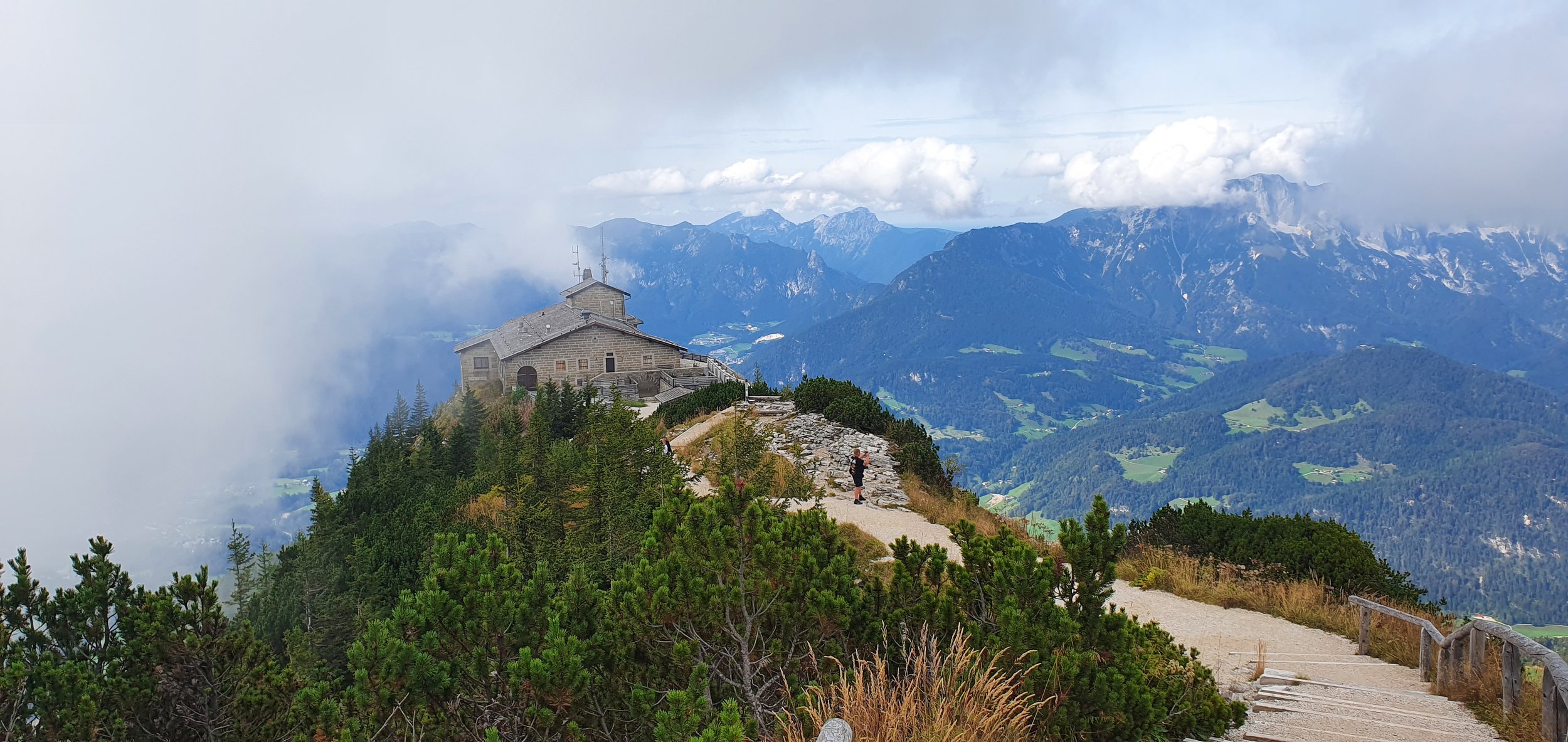
My Photos
The Eagles Nest
The Kehlsteinhaus (known in English as the Eagle's Nest) is a Nazi-constructed building erected atop the summit of the Kehlstein, a rocky outcrop that rises above Obersalzberg near the southeast German town of Berchtesgaden. It was used exclusively by members of the Nazi Party for government and social meetings. It was visited on 14 documented instances by Adolf Hitler. Today, it is open seasonally as a restaurant, beer garden, and tourist site.
The Kehlsteinhaus sits on a ridge atop the Kehlstein, a 1,834 m (6,017 ft) subpeak of the Hoher Göll that rises above the town of Berchtesgaden. It was commissioned by Martin Bormann in the summer of 1937. Paid for by the Nazi Party, it was completed in 13 months. Twelve workers died during its construction.
From a large car park, a 124 m (407 ft) entry tunnel leads to an ornate elevator that ascends the final 124 m (407 ft) to the building. The tunnel is lined with marble and was originally heated with warm air from an adjoining service tunnel. However it was normal for visiting high-officials to be driven through the tunnel to the elevator. Their driver would then have to reverse the car for the entire length of the tunnel as there was no space to turn.
My Guide for the day and views of the Obersalzburg.
The Kehlsteinhaus lies several miles directly above the Berghof, Hitler's summer home. In a rare diplomatic engagement, Hitler received departing French ambassador André François-Poncet on 18 October 1938, here. It was he who coined the name "Eagle's Nest" for the building while later describing the experience; this has since become a commonly used name for the Kehlsteinhaus.
Me doing a another rare pose at the top of the Kehlstein mountain.
Walking in the clouds above the Eagles nest and Memorial cross with Edelweiss flower motif. A wedding reception for Eva Braun's sister Gretl was held there following her marriage to Hermann Fegelein on 3 June 1944. While Hitler more often than not left the entertaining duties to others, he believed the house presented an excellent opportunity to entertain important and impressionable guests.
A trail leads above the Kehlsteinhaus towards the Mannlgrat ridge reaching from the Kehlstein to the summit of the Hoher Göll. The route, which is served by a Klettersteig, is regarded as the easiest to the top.
We are sat on an anti aircraft gun emplacement having lunch while the mist rolling in and a bird is waiting for some of our lunch.
The Eagles nest sits on the mountain while of all things a group of drummmers beat their drums in the foreground. A strange thing to see deep in the Bavarian Alps.
The Berghof was Adolf Hitler's vacation home in the Obersalzberg. Other than the Wolfsschanze ("Wolf's Lair"), his headquarters in East Prussia for the invasion of the Soviet Union, he spent more time here than anywhere else during his time as the Führer of Nazi Germany. It was also one of the most widely known of his headquarters, which were located throughout Europe.
The Obersalzberg was bombed by hundreds of British RAF Lancaster heavy bombers, including aircraft from No. 617 Squadron RAF (the "Dambusters"), which attacked Obersalzberg on 25 April 1945. At least two bombs struck the Berghof and did considerable damage to the building. Retreating SS troops set fire to the villa on 4 May, four days after Hitler's suicide in Berlin.
Deep in the mountains Bavaria is a concrete doorway set into the side of the mountain. Even in the height of summer, the thick steel door is cool to the touch, and drips with condensation. From the edges of the door frame comes a chilling cold breeze. It isn’t marked on any tourists guide maps, as the government would prefer that you had no idea that it exists. Behind the steel door lies the underground secret bunker complex of Adolf Hitler.
For 55 years, the ruins lay in the woods by the 13th hole of the Gutshof golf course, but these were taken away altogether during the summer of 2006. The Berghof's shell survived until 1952, when the Bavarian government demolished it with explosives on 30 April. The Berghof, the houses of Göring and Bormann, the SS barracks, the Kampfhäusl, and the teahouse were all destroyed.
The View from Hitlers picture window in the Berghoff (2020)
